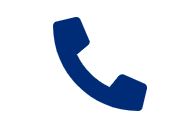Radiology Exam: Lumbar Puncture

A lumbar puncture, also called a spinal tap, is an image-guided procedure that helps to diagnose or treat certain diseases and conditions. During the procedure, a hollow needle, or cannula, is used to penetrate the spinal canal at the level of the third-to-fourth or fourth-to-fifth lumbar vertebra.
Fluoroscopy is a continuous X-ray that shows images on a computer monitor. This is used during a lumbar puncture to help guide the needle insertion between two lumbar vertebrae and then into the spinal cord.
A lumbar puncture removes a small amount of cerebrospinal fluid (CSF), the fluid that surrounds your spinal cord and brain to protect them from injury. A small amount of CSF can be examined for the diagnosis of various disorders.
Lumbar Puncture: What You Need to Know
- A lumbar puncture may be used to help diagnose diseases and conditions such as meningitis, encephalitis, Guillain-Barré syndrome, demyelinating diseases, inflammatory diseases, or cancers involving the brain or spinal cord.
- Lumbar puncture may also be used to measure the pressure of the cerebrospinal fluid that flows between the brain and spinal column.
Patient Resources
Find out how to prepare for your lumbar puncture.
Why Choose Johns Hopkins Radiology for Lumbar Puncture?
Our Physicians
Our diagnostic radiologists have subspecialty training in neuroradiology. Our state-of-the-art equipment and technology is combined with providing the highest level of patient care.
Find a Johns Hopkins radiologist who specializes in lumbar puncture procedures.
Our Locations
Bone density scans may be done on an outpatient basis or as part of a hospital stay. A bone density scan using DEXA or CT are offered at all of our locations. To schedule an exam, call 443-997-7237.
Request an Appointment
Schedule by phone

